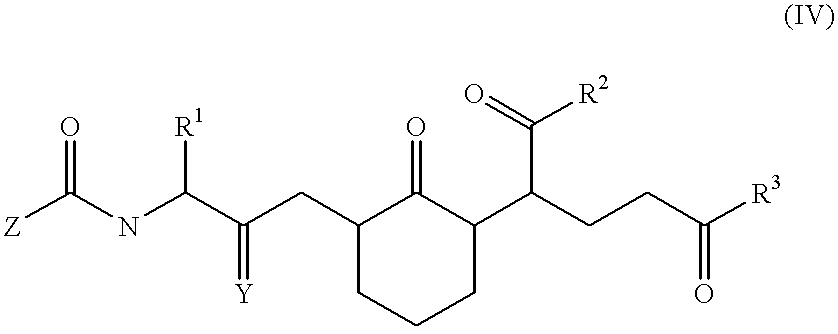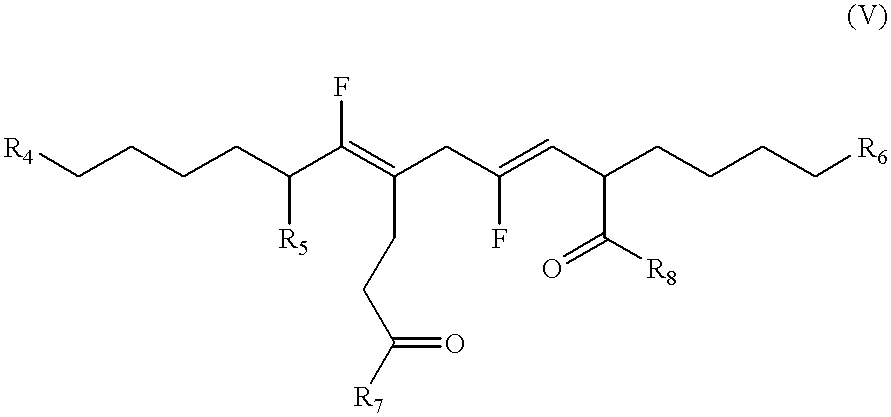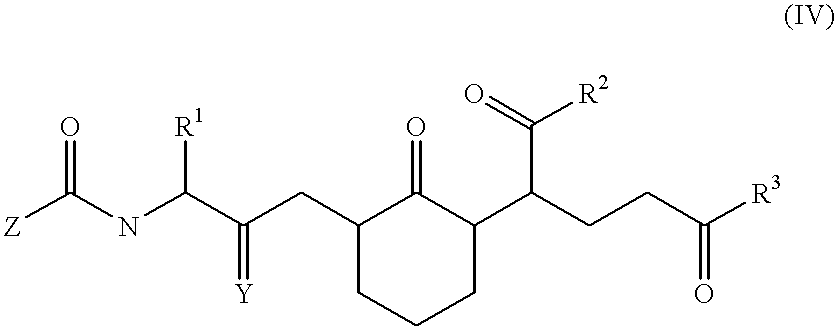Compounds and methods to inhibit or augment an inflammatory response
a technology of compounds and inflammatory responses, applied in the direction of antibody medical ingredients, peptide/protein ingredients, depsipeptides, etc., can solve the problems of increased instability, necrosis, loss of extracellular matrix, etc., to reduce or inhibit the translation of mrna, reduce or inhibit the expression of chemokine, and the effect of sufficient sequence complementarity
- Summary
- Abstract
- Description
- Claims
- Application Information
AI Technical Summary
Benefits of technology
Problems solved by technology
Method used
Image
Examples
example 1
Identification and Characterization of Pan-Chemokine Peptide Inhibitors
[0322]Based on an alignment of MCP-1 sequences from different species, three regions in MCP-1 were identified which were conserved between all the species examined. Three purified (>95% purity) peptides (12-15mers) were prepared which had the greatest sequence homology between the human and mouse MCP-1 sequences (Table 3). These peptides were screened for their ability to inhibit hMCP-1 induced THP-1 migration.
[0323]For this assay, THP-1 cells were maintained at a density of 4×105 cells per ml in RPMI-1640 supplemented with 10% fetal calf serum+20 μM 2-mercaptoethanol. Chemotaxis was induced in a 96-well disposable chemotaxis chamber fitted with a 5 μM polycarbonate filter (PVP free, ChemoTX, Neuroprobe Inc., Cabin John). Twenty-nine μl of chemoattractant (recombinant human chemokine; 50 ng / ml, i.e., 5.9 nM) or control (100 ng / ml TGFβ) was added to the lower compartment of each well. The framed filter was aligned...
example 2
Characterization of Subunits and Variants of Peptide 3(1-12)[MCP-1]
[0334]To determine whether a subunit of peptide 3 has biological activity and selectivity, two 6mer “half-peptides” were analyzed (Table 5): EICADP (SEQ ID NO:8), corresponding to peptide 3(1-6)[MCP-1], and KQKWVQ (SEQ ID NO:9), corresponding to peptide 3(7-12)[MCP-1]. Peptide 3(7-12)[MCP-1] (SEQ ID NO:9) was as potent an inhibitor of CC chemokine signaling as peptide 3(1-12)[MCP-1] (SEQ ID NO:1), but was noticeably more potent as an inhibitor of CXC chemokines (Table 6). In contrast, peptide 3(1-6)[MCP-1] (SEQ ID NO:8) was much less potent as an inhibitor than peptide 3(1-12)[MCP-1] (SEQ ID NO:1).
[0335]
TABLE 5NAMESEQUENCESOURCEPeptide 1 familyPep 1AQPDAINAPVTCCResidues 1-13 of mature hMCP-1(SEQ ID NO:2)Peptide 2 familyPep2(1-15)[MCP1]SYRRITSSKCPKEAVResidues 28-42 of mature hMCP-1(SEQ ID NO:3)Pep2(1-15)[SDF1]HLKILNTPNCALQIVResidues 26-40 of mature hSDF-1β(SEQ ID NO:4)Pep2(1-14)[MIPIα]DYFETSSQCSKPGVResidues 28-41 of m...
example 3
Identification and Characterization of Chemokine Sequences that are Functional Agonists
[0346]The results described above, that peptide 2(1-15)[MCP-1] (SEQ ID NO:3) did not inhibit MCP-1 activity in the THP-1 migration assay, did not exclude the possibility that peptide 2(1-15)[MCP-1] (SEQ ID NO:3) associates with the MCP-1 receptor and either fails to inhibit MCP-1 binding and signaling, or acts as an agonist, preventing binding of MCP-1 but transducing an MCP-1 like signal. To determine whether peptide 2(1-15)[MCP-1] (SEQ ID NO:3) binds to chemokine receptors, THP-1 cells were mixed with a biotinylated derivative of peptide. Peptide 2(1-15)[MCP-1] (SEQ ID NO:3) was found to bind to THP-1 cells with a reasonable affinity (kD=1.9 μM), suggesting that peptide 2(1-15)[MCP-1] (SEQ ID NO:3) was able to interact with chemokine receptors without inhibiting chemokine signaling (a neutral binding agent).
[0347]Unlike peptide 3, which represents a region that is relatively conserved between ch...
PUM
| Property | Measurement | Unit |
|---|---|---|
| Molar density | aaaaa | aaaaa |
| Molar density | aaaaa | aaaaa |
| Molar density | aaaaa | aaaaa |
Abstract
Description
Claims
Application Information
 Login to View More
Login to View More - R&D
- Intellectual Property
- Life Sciences
- Materials
- Tech Scout
- Unparalleled Data Quality
- Higher Quality Content
- 60% Fewer Hallucinations
Browse by: Latest US Patents, China's latest patents, Technical Efficacy Thesaurus, Application Domain, Technology Topic, Popular Technical Reports.
© 2025 PatSnap. All rights reserved.Legal|Privacy policy|Modern Slavery Act Transparency Statement|Sitemap|About US| Contact US: help@patsnap.com



